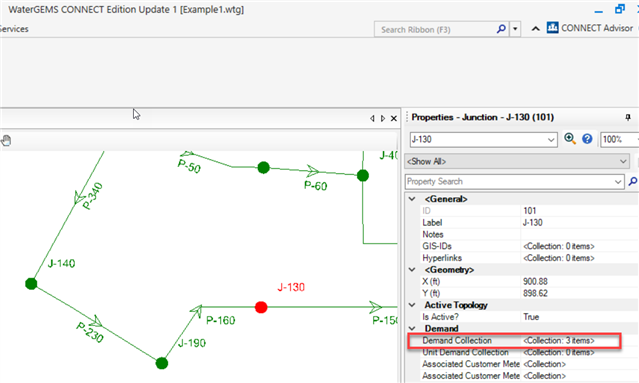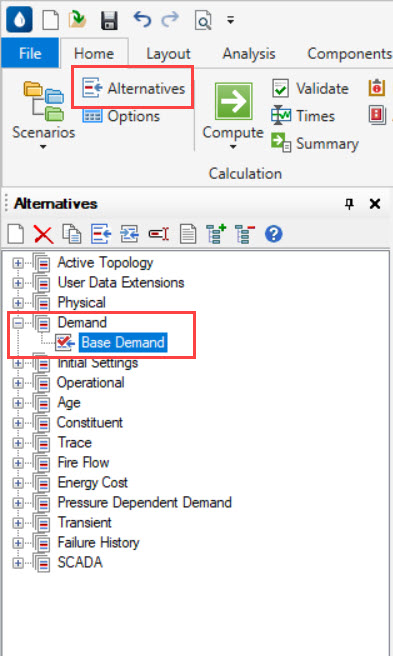

Meter assignment can prove less accurate than the more complex allocation strategies because the nearest node is determined by straight-line proximity between the demand node and the consumption meter. If the data relates to projected values, you can use it for demand projections. Help Center Find new research papers in: In figure 3, the total demand in meter route A may be 55 gpm 3. Reproduction in whole or in part is prohibited. This technique manuak unnecessary if all demands are accounted for using one of the other allocation strategies. Spatial allocation of demands is the most common approach to loading a water distribution model.

Note that you can use these data sources to assign current demands the difference between the two being the data that is contained within the source. This strategy requires the definition of lump-sum area watergwms population polygons in the GIS, service polygons in the model and their related demand nodes. Meter aggregation is a polygon-to-point allocation technique because the service areas are contained in a GIS polygon feature class, and the demand nodes are contained in a point feature class. You can determine a projected demand for each of the service areas and assign the demand nodes associated with each service polygon. The known flow within the lump-sum area generally is divided among the service polygons bwntley the area using one of two techniques - equal bebtley or proportional distribution: In her easy-to-follow, friendly style, long-time Cadalyst contributing editor Lynn Allen guides you through a new feature or time-saving trick in every episode of her popular AutoCAD Video Tips. Assigning metered demands to nodes is a point-to-point demand allocation technique, meaning that known point demands customer meters are assigned to bent,ey demand points demand nodes.Īssigning metered demands to pipes also is a point-to-point assignment technique, because you still must assign demands to node elements, but an additional step is involved. The greater the percentage of the lump-sum area or population that a service polygon contains, the greater the percentage of total flow assigned to that service polygon. Service polygons define the service area for each of the demand nodes figure 2. Bentley WaterGEMS V8i (SELECTseries 5) 08.11.05.61 Many of these data types do not include demand information, so further data conversion is required to translate the information contained in manuall future condition polygons into projected demand values. Piping routes are not considered, so the nearest demand isn’t necessarily the location from which the meter actually receives its flow.
#Watercad v8i demand on node code
Write the CSS code manually or let the style sheet editor do it for you! Click here to sign up.

The consumption of watergms is the driving force behind the hydraulic dynamics occurring in water distribution systems. Estimation of Demands Using Land Use and Population Data Automated techniques also can assist in the estimation of demands using land use and population density data. BENTLEY WATERGEMS.ĪspenONE Engineering suite v8. WaterGEMS® is a hydraulic and water quality modeling solution for water distribution systems potential manual-input mistakes. distribution network model created in Bentley WaterGEMS and performing a hydraulic transient entered manually to complete the layout. DAA/ Bentley WaterGEMS V8i User’s Guide Technical Information Resources Glossary Bentley WaterGEMS V8i User’s Guide 1-i WaterGEMS.


 0 kommentar(er)
0 kommentar(er)
